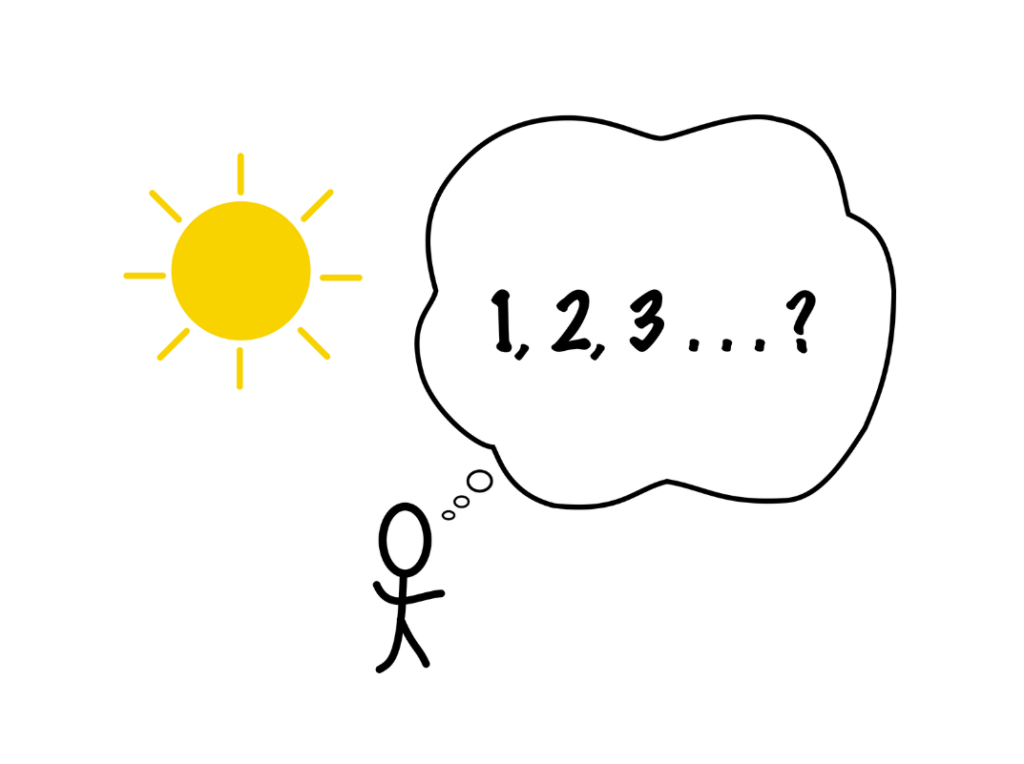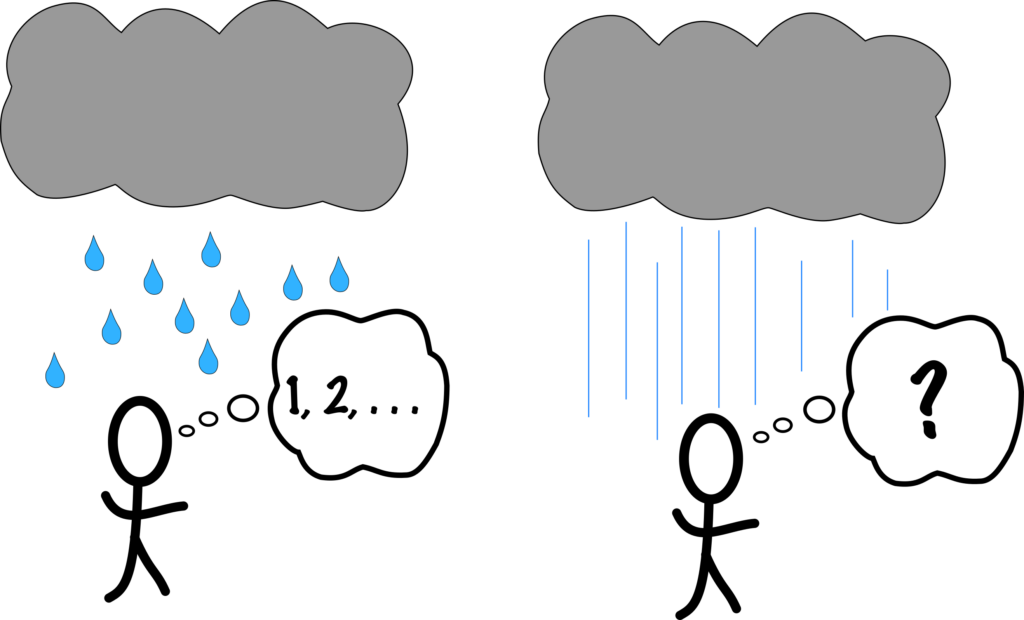What is the Quantum in “Quantum Science”?

If a quantum means something that can be counted, what is the “quantum” in “quantum science” or “quantum mechanics”? What is the thing being counted?

Interestingly, if you ask this question to different scientists, you will likely get different answers. There are some connections between the different answers, but it will be easiest to start by just looking at one answer you might frequently get: One of the first uses of the word quantum in the quantum science context is in the phrase “light quanta,” the idea that there is something countable about light. This phrase is most easily understood in terms of the energy that light carries from one place to another.

Do you mean that if you step into the sunlight, you can feel it warming you?

Yes, exactly. The energy in the light comes from the sun, travels millions of kilometers through space, and hits your skin, warming it up. The longer you stand in the sunlight, the more energy your skin absorbs. In principle, this transfer of energy from the light to your skin could be continuous. Indeed, before quantum science, the generally accepted theory among scientists was that light energy could be continually transferred in any amount. But it turns out, this light energy is only transferred in tiny quanta – little pieces of energy. The common name of these light quanta you may already have heard, they’re called “photons.”

So, can you feel these photons when you’re being warmed by the sun?

Not individually, they’re so small that they’re imperceptible to us. However, we can now, thanks to our understanding of quantum mechanics, create instruments that do detect and count individual photons. As an analogy to understanding why you can’t feel individual photons, instead of thinking about light hitting your skin, think about water hitting it. If you put your hand under a running faucet or in a stream, you would feel water continually flowing, but if you go out in the rain, you would feel water hitting you in drops that are countable.

I’m not sure if I could actually count the number of raindrops hitting me when I’m standing in the rain.

It would be! The point is not whether we can actually find the number, but whether there is something we can count at all. In this case, a quantum of sand is a grain of sand. But now let me ask a trickier question, if we were on the beach and looked out at the water and I said, “count the water” what do I mean?

Maybe how many liters of water?

Yes, this would be challenging! Again, the point is not whether a person can actually calculate the correct number; it’s whether there is anything meaningful to count at all. Now if the raindrops became smaller and smaller and came faster and faster, eventually you would no longer be able to perceive that the water hitting you came in individual drops, it would start to seem like the continuous flow of water you perceive when you put your hand under a faucet or in a stream. The fact that there are countable drops would be hidden from your perception.
It’s a similar situation in that the discrete, countable nature of the pictures is hidden. When you’re watching a movie, it doesn’t seem like there is anything to count in the motion you’re seeing. In the same way, the rain with very small drops might seem like a continuous flow of water and the sunlight energy warming your skin doesn’t appear to have anything countable about it. These quanta of sunlight energy are very well hidden from our usual perception of the world. This is kind of a hallmark of quantum science – finding out that things that don’t seem to have anything countable about them do, in fact, have a countable “quantum” aspect to them.

No. In the same way that raindrops or grains of sand can come in different sizes, the photon energies can have different sizes. However, there is a very nice fact about photon size related to the fact that any light can be thought of as being made up of a combination of different colors of light.

Yes, I’ve seen how you can send light through a prism of glass that breaks it up into its different colors.

Exactly, or like a rainbow, which you can see when sunlight is broken up into its constituent colors by raindrops. So, it turns out that each specific color of light has its own size of photons. All red light of a particular type – more technically of a particular wavelength or frequency – transmits energy in quanta of the same size. Similarly, all blue light of a particular type has energy quanta of the same size. Photons of blue light are larger than photons of red light, and photons of yellow light are bigger than red light but smaller than blue light. The order of colors of a rainbow from red to violet gives the size of photons from smallest to largest.

Now I’m picturing how, when I’m standing in the sunlight, my skin is absorbing these different-sized light quanta, each corresponding to different colors.

In fact, in addition to the visible colors, sunlight also contains light that we can’t see with our eyes. One type of this light is “ultraviolet” or UV light. This light actually has larger energy photons than the visible light. The size of these photons is quite relevant to us because when they hit our skin, they can do the most damage to it biologically; it’s the large photons of UV light that cause sunburns and can increase one’s chance of getting skin cancer.

So even though this quantum nature of light is quite hidden from our perception, it actually has some serious consequences for us. One more question in thinking about all these very small, different-sized photons being absorbed by our skin when light hits us: if there’s a countable number of them, how many are hitting us?

That will depend somewhat on the person and the light, but an average person standing in the sun is going to have around one billion trillion photons hit their skin each second. That’s a one with 21 zeros: 1,000,000,000,000,000,000,000 each second.

My goodness, that’s a large number!

It’s a number you can write down, but certainly couldn’t count to! It is a fascinating aspect to understand about the common experience of standing in sunlight that no one knew existed until the advent of quantum science. It’s something to ponder next time you’re being warmed by the sun.
Written by Paul Cadden-Zimansky, Associate Professor of Physics at Bard College and a Global Coordinator of IYQ.
IYQ mascot, Quinnie, was created by Jorge Cham, aka PHD Comics, in collaboration with Physics Magazine.
All rights reserved.
For general questions about IYQ, please contact info@quantum2025.org. For press inquiries, contact iyq2025@hkamarcom.com.






